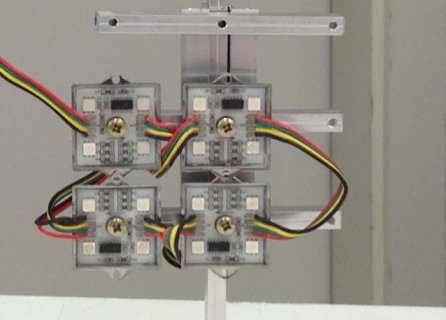thad.robertson
New member
Hello
I am considering a low-res video wall project that spans a large area with 800 odd pixels in the range of 300mm sq.
Environmental factors dictate that I must have a very bright point source, up to 18 5050's per logical pixel, therefor I would like to group several WS2811 modules together to form one logical pixel.
I can envisage a couple ways of doing this, and I'm wondering which is best:
1. Run strings in parallel from each output of the Teensy3. If I take this approach, how many strings can be safely run from each pin?
or
2. Modify the library to create a logical pixel from n actual pixels. Would this have an adverse effect on timing?
tia
Thad
I am considering a low-res video wall project that spans a large area with 800 odd pixels in the range of 300mm sq.
Environmental factors dictate that I must have a very bright point source, up to 18 5050's per logical pixel, therefor I would like to group several WS2811 modules together to form one logical pixel.
I can envisage a couple ways of doing this, and I'm wondering which is best:
1. Run strings in parallel from each output of the Teensy3. If I take this approach, how many strings can be safely run from each pin?
or
2. Modify the library to create a logical pixel from n actual pixels. Would this have an adverse effect on timing?
tia
Thad
Last edited:


